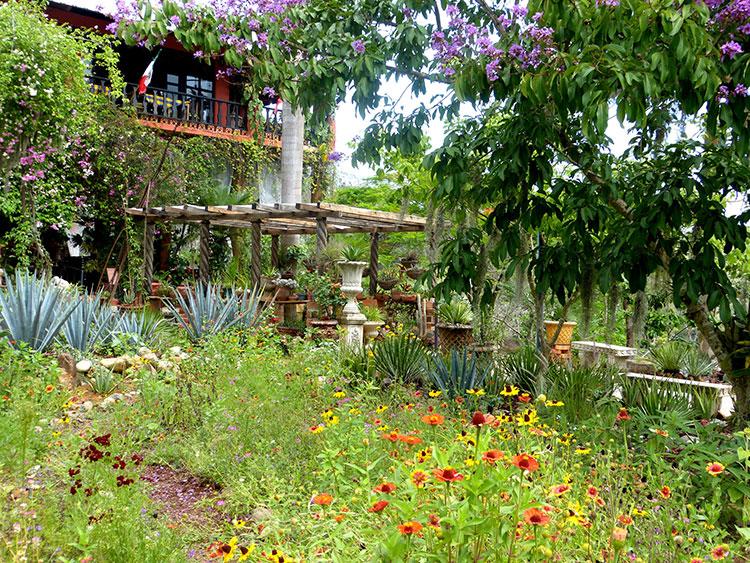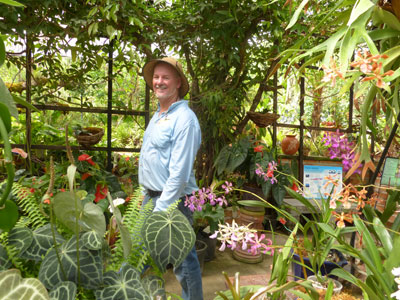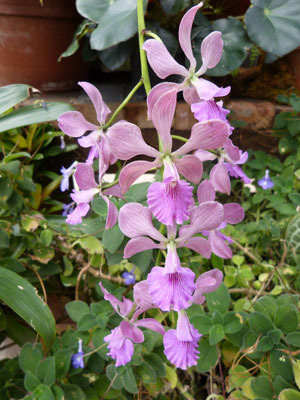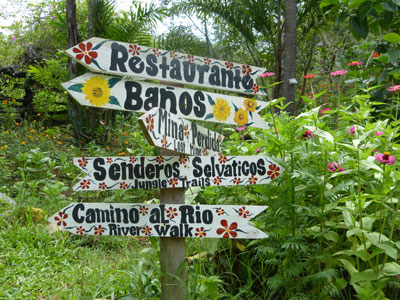Vallarta Botanical Gardens in Mexico
This item appears on page 61 of the November 2013 issue.
It was a life-changing moment.
Newly moved to Puerto Vallarta, Bob Price answered his door to be faced by a vendor with a tray of orchids.
“Where did you get them?” Price asked.
“In the mountains, señor,” the orchid man answered, pointing toward the southeast.
“I’ve had a lifelong interest in plants,” Price told me as we visited together in June 2013. “First thing when I arrive in a new place is to search out a garden to visit, especially hoping there will be a botanical garden, to see what’s growing in the area. To my surprise, given that Mexico is one of the most biodiverse places in the world and the state of Jalisco, where Puerto Vallarta is located, is especially rich in varieties of flora, I could not find a garden to visit, not even a park where I could see native plants.”
With that, he headed for the mountains pointed to by the orchid vendor, the Cabo Corrientes, an area officially designated as a region remarkably rich in species. He parked at the side of the road, where a pathway beckoned into a forest.
“Within a short distance, I photographed 11 different species of orchids,” Price said, “and came down with orchid fever.”
Meanwhile, he was beginning to discover the extent of plant poaching in the area, practiced by such illegal collectors as the vendor who’d appeared at his door.
“Poachers working in the highlands and jungles collect wild orchids by the hundreds, stripping entire populations,” he said. “Native plants, especially orchids, are being plundered to the point of extinction and brazenly sold in a thriving black market, not only door to door but to local garden centers as well. The only reason our orchids have escaped extinction is the extreme severity of terrain.”
A suitable site
Price’s first trip into the mountains turned into twice-a-week safaris to collect not plants but seeds to painstakingly propagate and add to what was becoming an ever-growing orchid collection that he kept on the roof of his house.
“Friends began to bring me other kinds of native plants,” he said. “My roof was becoming a miniature native-plant botanical garden!”
All led up to the day he called his mother, Betty, with whom he had shared a successful restaurant career in Florida. “Come visit,” he suggested. “Puerto Vallarta doesn’t have a botanical garden and I want to start one. I need you to help me search for land… and lend me some money.”
So began a year’s search for a location, with the duo accepting the reality that if they were to create the botanical showcase they had in mind, it would create a significant dent in the family’s resources.
A suitable parcel of land in the Cabo Corrientes region was finally found: an overgrazed 20 acres claimed by cattle for over 35 years.
“Little by little, we began to carve out the garden, taking cues for its design from long-trampled cow paths,” Price said.
On Nov. 15, 2005, the Vallarta Botanical Gardens, A.C., opened to the public.
Exploring the gardens
Following those cow-paths-turned-trails, I wandered through a botanically organized landscape dedicated to native habitat. Planted areas appeared sprung from the earth as if designed by nature decades ago. Reforestation of the grazing land blended seamlessly into the dense forest, pushing in at the gardens’ edges — native oak, grown from acorns, plus mountain pine, mahogany… .
The appropriately named Agave Trail featured 6,000 blue agave, from which tequila is made. Other paths led to the Fern Grotto, Cactus Garden and Tropical Fruit Orchard. The River Walk made its way down to the granite boulder-strewn Los Horcones River, in which visitors are invited to cool themselves off in the crystal-clear water.
At the heart of the gardens is the Hacienda de Oro visitors’ center and restaurant. Designed in the open-air style of an 18th-century plantation manor house, the structure was embraced by an exuberance of annual flowers. Water lilies floated in a reflecting pond near the entrance.
Orchids, however, remain the gardens’ primary purpose for being. A 3,000-square-foot lath structure displays a spectacular array of species, including vanilla orchid vines from which vanilla flavoring is sourced. A nearby structure offers propagated orchids for sale.
Under construction is an orchid conservatory. When completed, it will display the country’s most complete collection of orchids native to Mexico.
“Thanks to donors, sponsors, volunteers and grants,” Price said, “we are well on our way to becoming recognized internationally as a world-class venue in support of worldwide orchid conservation.”
As I said good-bye to Bob Price, there was one question I had to ask: “Did you buy orchids from the vendor who appeared at your house that day?”
“I did,” he replied, “and I still have them.”
I looked about. All this had sprung from a simple knock on a door.
Planning your visit
From Puerto Vallarta’s Old Town, the Vallarta Botanical Gardens are located about a 30-minute drive south on Highway 200, at the 24-kilometer marker.
By taxi, the ride costs about $17 one way. Or you can take the public bus to the village of El Tuito, as I did, catching it at the corner of Puerto Vallarta’s Carranza and Aguacate streets; a bus ($1.50 each way) leaves about every half hour. At the El Tuito stop, it is but a short walk to the gardens’ entrance.
From January through May the gardens are open daily 10 a.m.-6 p.m., and from June through December they’re closed Mondays; they’re also closed Christmas and New Year’s Day. The entrance fee is 60 pesos (about $5).
Contact the Vallarta Botanical Gardens, A.C. (the physical address is Carretera Puerto Vallarta a Barra de Navidad, Km 24, 48447 Cabo Corrientes, Jalisco, Mexico… and the mailing address is Blvd. Francisco Medina Ascencio #2180 Local 7 y 8, Zona Hotelera Norte, Suite 148, Puerto Vallarta, Jalisco, Mexico, C.P. 48333; phone +52 [322] 223 6182).




